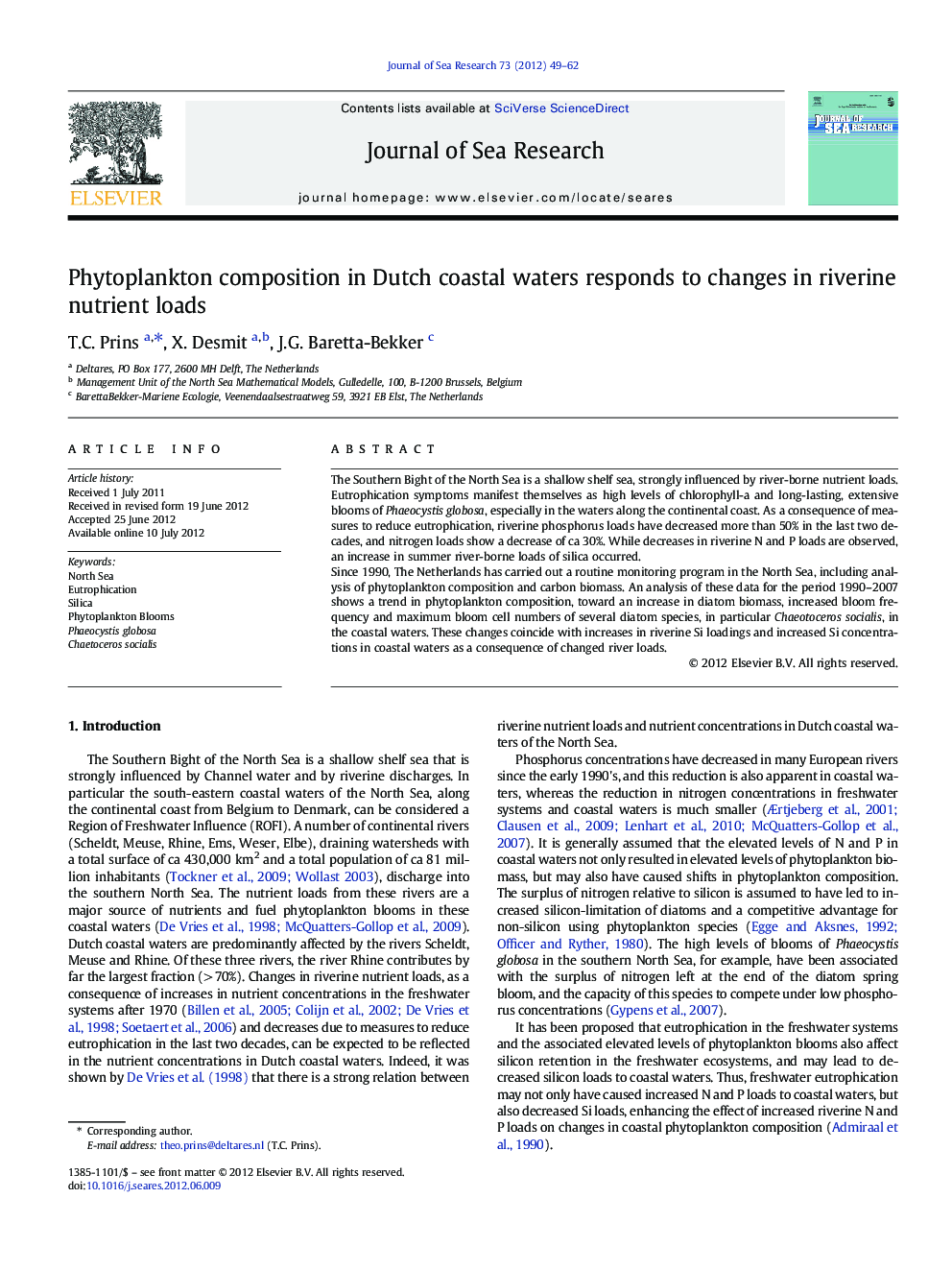| کد مقاله | کد نشریه | سال انتشار | مقاله انگلیسی | نسخه تمام متن |
|---|---|---|---|---|
| 4549911 | 1627501 | 2012 | 14 صفحه PDF | دانلود رایگان |

The Southern Bight of the North Sea is a shallow shelf sea, strongly influenced by river-borne nutrient loads. Eutrophication symptoms manifest themselves as high levels of chlorophyll-a and long-lasting, extensive blooms of Phaeocystis globosa, especially in the waters along the continental coast. As a consequence of measures to reduce eutrophication, riverine phosphorus loads have decreased more than 50% in the last two decades, and nitrogen loads show a decrease of ca 30%. While decreases in riverine N and P loads are observed, an increase in summer river-borne loads of silica occurred.Since 1990, The Netherlands has carried out a routine monitoring program in the North Sea, including analysis of phytoplankton composition and carbon biomass. An analysis of these data for the period 1990–2007 shows a trend in phytoplankton composition, toward an increase in diatom biomass, increased bloom frequency and maximum bloom cell numbers of several diatom species, in particular Chaeotoceros socialis, in the coastal waters. These changes coincide with increases in riverine Si loadings and increased Si concentrations in coastal waters as a consequence of changed river loads.
► Riverine N and P loads in the years 1990–2007 decreased.
► Si loads increased, coinciding with decreases in chlorophyll in the rivers.
► Phytoplankton data showed increased diatom blooms in coastal waters.
► Combating eutrophication in freshwater systems increases Si loads to coastal waters.
► This stimulates diatom blooms in coastal waters.
Journal: Journal of Sea Research - Volume 73, October 2012, Pages 49–62